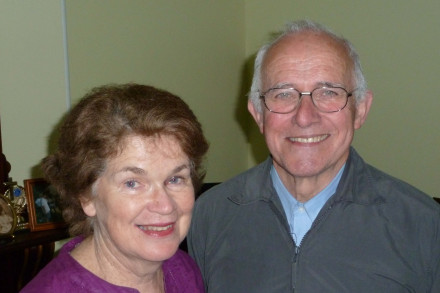Interviewer: Ben Stephenson for National Library of Australia
Irish dancing has been at the centre of Trish McGrath’s life. … it’s a delight, it’s making music with your feet, it gets the blood up, and you feel yeah … if you can’t play a musical instrument there you go you can play music with your feet, you can dance away, it’s just absolutely brilliant.
It all began for Trish in the 1960s when she started going to the old INA Sunday night dances in Devonshire Street where the crowd swayed along to Jimmy McLeod’s band playing foxtrots and quicksteps as well as those old staples of Irish céilí dancing – the Siege of Ennis and the Walls of Limerick:
… just kind of swaying along if they couldn’t dance, but you got asked to dance which was really good, and I never looked back, I loved going, every dance, up all night dancing, it was a brilliant spot.
The Master of Ceremonies at the Sunday dance, County Louth man Peter McKenna, spotted Trish’s potential and asked her to join his performance group, the Sydney Céilí Dancers. Soon she was immersed in the group’s repertoire of jigs and reels that included dances such as the Sweets of May, the High Cauled Cap and the Trip to the Cottage. Trish recalls this time fondly – ‘ … we used to have enthusiasm, we thought we were wonderful’. For an increasingly multicultural Australia the Sydney Céilí Dancers became Australia’s window into Irish culture, shown off when they performed at events such as Sydney’s Waratah Festival along with performers from Greece, Spain and Cossacks doing their Russian thing. Perhaps their most unusual performance was for a deaf society:
… how could they enjoy this, apparently they could feel the rhythm coming through, we got people up to dance and they had quite good rhythm through the floor, there are people who can hear that haven’t got good rhythm.
And a big thrill was dancing to the music of the Chieftains at one of their Sydney concerts.
In 1998 Trish left the Sydney Céilí Dancers and joined a new group founded by John Michael Hand, Begonta. This came after a visit to Ireland in 1996 to dance at festivals all over the country and to attend the Willie Clancy Summer School in County Clare. Begonta specialised in a particular ‘battering’ style of Clare dancing, a foot tapping, heel banging to the music style different to the quieter more ‘gliding’ sense of traditional céilí dance. Basically Begonta was less performance orientated and more a group of dancers practicing a lot and striving for excellence. In Trish’s words they were ‘very good’.
From the late 1990s Trish became deeply involved in teaching and dancing at what was a key venue for Irish music in Sydney – The Harp pub in Tempe. The pub was advertising set dancing, Trish went along, did some set dances and was quickly asked if she would like to teach! On a Sunday there would be dance classes and dancing followed by music sessions. In the aftermath of Riverdance, first performed in 1994, these were years of heightened public enthusiasm for Irish dance, even among the Anglos.
Today Trish feels some of this enthusiasm has fallen away. Irish backpackers and younger immigrants didn’t seem very interested in the local Irish dance scene. The multicultural society has so many other things on offer that the old attraction of going to an Irish dance – where boy could meet girl – is no longer there. So involvement is less and Trish feels that there is a danger that a culture is being lost. But her enthusiasm has not waned and she continues to organise dancing classes and céilís at the Gaelic Club. For Trish McGrath Irish dancing has given her a lot – she met her husband Pat at a dance – and, although Australian born, Irish culture has given her ‘great pleasure and delight’ and, although it’s now harder work to keep going, she’s up for that challenge.

